Today we will learn how to automatically remind people that they have tasks due. We will also learn how to automatically approve tasks that have been due for quite some time.
Learning Concepts at this Skill Station:
Editing user tasks
Configuring escalation conditions
Automating task assignment reminders
Video Tutorial:
During the last few lessons we have devoted much of our attention to the Task Events tab in a User Task step. Today we will explore the adjacent tab, which is the Escalations tab. This is where we will implement the requirements for our automations.
Start by accessing the Streams Management area.
![]()
Unlock the latest version of the stream.
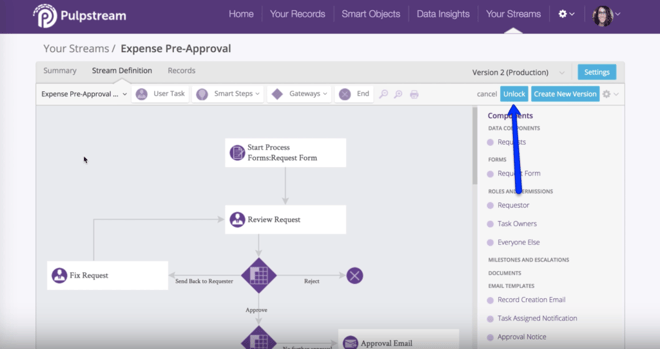
In your stream, click on the Review Request step to open it. Remember that this is a User Task. In the popup, click on the Escalations tab. This is where we will be configuring our task escalations.
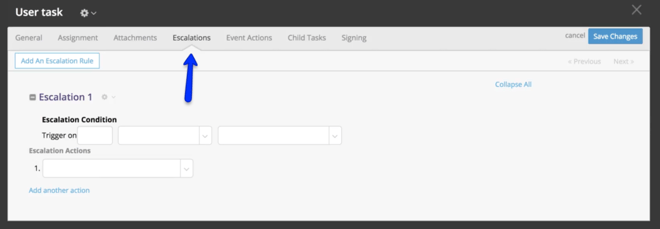
We are going to create escalation conditions with these requirements:

To accomplish this we will need to create email templates for the different reminders.
First we will create a “Task Is Due Soon” reminder email template. Go to your Stream Definition canvas, hover your mouse over the Email Templates section of your Components Catalog to reveal the “new” function. Click on that.
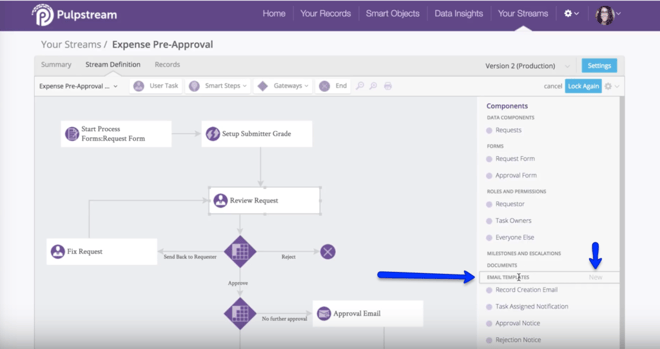
Let's level up and create a personalized email. Title it: Task is Due Soon. The Sender will be the “Record Submitter.”
Make it look like this one, adding merge field values for the pieces of information that the system can pull in to personalize the email. Remember that you can click on the magnifying glass icon to find the merge field values.
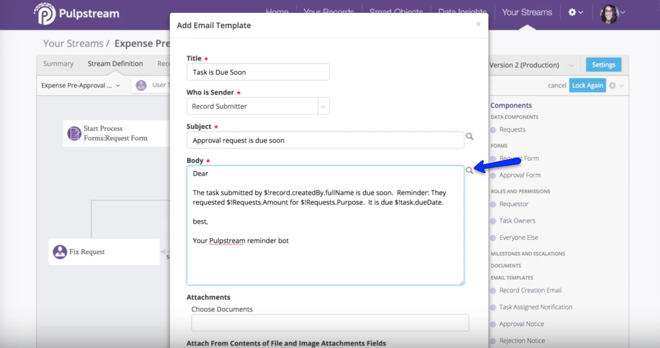
Now that you have an email template created for the email automation, go back to your Stream Definition canvas and open the Review Request step. Go to the Escalations tab. Let's add our first escalation. Click on the Add an Escalation Rule button.
Escalations are configured by entering a number (in the first field in the Escalation Condition row), telling the system what that number is (in the second pull-down menu in the row), and which attribute is tying that number to the record (in the third pull-down menu.)
If you configure the conditions so that the trigger is 2, business days, after task creation, this will create an escalation trigger that will fire that number of days after the task was created. If a task was created on a Thursday, and you have opted to use the business day calendar, the escalation would be triggered on Monday morning. The business calendar option is available on the General Tab in your user task.
Now let's go back to the Escalations tab to explore a few of the duration options in the Escalation Condition.
- The submission date - is the day that the request was submitted.
- The task acceptance date - is the day that a task was claimed. This is useful when a task has multiple owners. We will learn more about that at the next Skill Station.
- The date present in a field - is useful when a field in a data component is driving the escalation. For example, if you worked at a loan processing company, if you had a loan that needed to be processed within 30 days of a date present in a loan application, then this option would be best to drive due dates, escalations, etc.

Based on our requirements for the task escalation, we will define our condition to trigger 2 days before the task is due. Underneath these conditions are Escalation Actions, just like in the Event Actions tab. When an escalation condition is triggered, this is where we declare which actions will happen.
We have a few options:
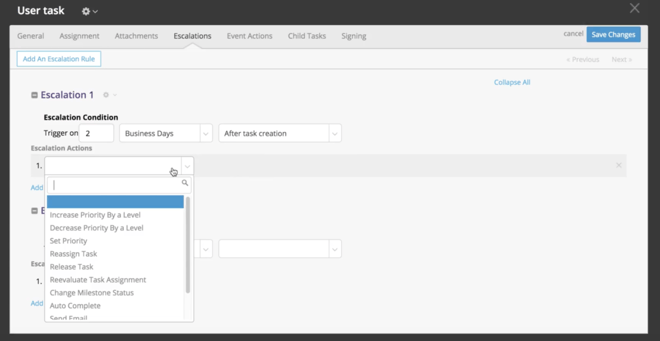
The release task action deserves explanation. It is used when a task has multiple owners and one of the owners has claimed a task, but is not making progress to complete the task. We can automatically release that task to others who are available to complete it. For example, if an expense approval can be completed by 4 people on the finance team and the person who claimed it doesn’t do anything with it for 5 days, we can release the task back into the pool, so someone else can take care of it.
We do this on the Assignment tab in our User task. If you are interested, go to this tab to view your options. The Assign task to section, can assign tasks to users. Under Assignment Options in Task Assignment pull-down menu, we have various options to distribute tasks. When a task is assigned using a round robin format or a minimum queue length, for example, then the system will find the next best assignee.
On the Escalations tab, we see in the Escalation Actions pull-down menu that we have options related to scenarios in which a task can be assigned to multiple people.
For our Escalation Action we will select “Send Email.” Use the template we created earlier, which was called “Task is Due Soon.” Choose “Task Owner” as the Recipient.
Now lets add a second Escalation. We want it to Trigger 7, days, after the task due date. Choose these options in the pull-down menus. The Escalation Action we want is “Auto Complete.” For the Completion Action, we select “Approved.”
And that’s it. You now have 2 escalations configured. When you are done, they will look like this:
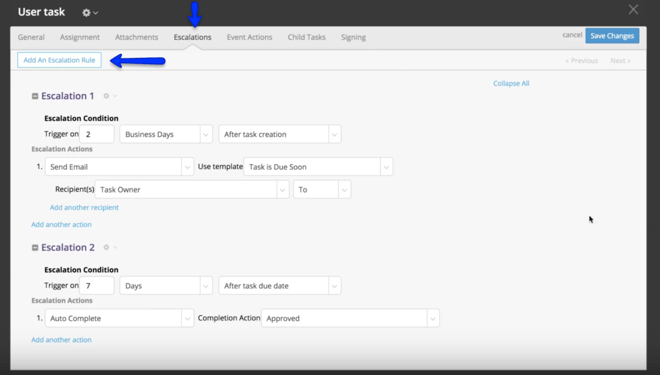
Save your changes. Save the process. At the next Skill Station we will learn how to add line items with sub forms and child data lists.

